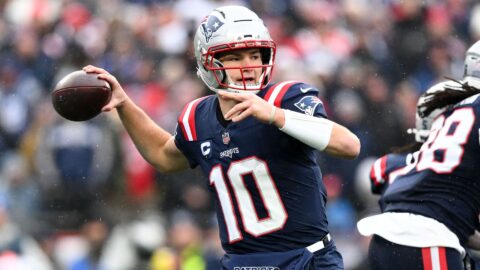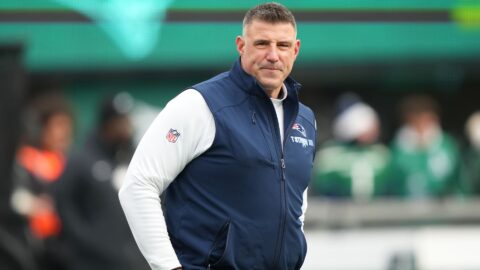COOPERSTOWN, N.Y. – When former Red Sox left fielder Jim Rice is formally inducted into the National Baseball Hall of Fame Sunday afternoon he will be the 289th person to be enshrined. Only 202 former major leaguers – one percent of those who have played – have earned a spot in the Hall.
Of the other 87 inductees, there are 35 Negro League players, 26 executives or pioneers, 18 managers, and eight umpires. There are currently 65 living members of the Hall of Fame.
The Hall of Fame was established in 1936 and the first group of players was inducted: Ty Cobb, Walter Johnson, Christy Mathewson, Babe Ruth and Honus Wagner. Cobb earned the most votes in that group, 532 of the 545 ballots cast, 98.23 percent, fourth all-time behind Tom Seaver (98.84 percent in 1992), Nolan Ryan (98.79, 1999) and Cal Ripken, Jr., (98.53, 2007).
Players can gain election to the Hall in one of two ways. First, qualified members of the Baseball Writers Association of America can vote on players who have played at least 10 years and have been retired for at least five years. If an active player or a play who has been retired for less than five years dies but is otherwise qualified, he becomes eligible for the next vote at least six months later. If not elected, they remain on the ballot for 15 years if they receive five percent of the vote. After that they are transferred to the Veterans’ Committee ballot, where they can remain indefinitely. Also, the Veterans’ Committee votes on players whose careers ended at least 21 seasons ago, along with manager, umpires, and executives. A candidate who receives at least 75 percent of the ballots cast games election to the Hall of Fame.
Rice was elected in his last year of eligibility on the writers’ ballot. Rickey Henderson, who played for the Sox in 2002 but is being inducted as a member of the Oakland A’s, was elected in his first year of eligibility. And Joe Gordon, former Yankees second baseman, was elected by the Veterans’ Committee.
Henderson is the 45th player to be elected in his first year of eligibility. Other than the inaugural election in 1936, 1999 is the only year where as many as three first-year candidates were elected – Ryan, Robin Yount and George Brett.
This year’s election, announced in January, was the 66th Hall of Fame election held by the BBWAA. Of the 74 elections starting in 1936, the BBWAA has elected at least one person 57 times. On seven occasions it has not elected anyone – in 1945, 1946, 1950, 1958, 1960, 1971, and 1996. On nine occasions no election was held – in 1940, 1941, 1943, 1944, 1957, 1959, 1961, 1963, and 1965.
Lou Gehrig in 1939 and Roberto Clemente in 1973 were elected to the Hall of Fame in special elections. Gehrig, who started the 1939 season with the Yankees, was elected to the Hall by special proclamation when it was revealed he was suffering from amyotrophic lateral sclerosis (ALS), the disease which now bears his name. Clemente died Dec. 31, 1972, in a plane crash while on his way to deliver supplies to earthquake victims in Nicaragua. He was elected to the Hall in January 1973 in a special election, becoming the first Latin-born player elected to the Hall.
The BBWAA has elected 108 candidates to the Hall, and the Veterans’ Committee has elected 155 candidates (94 Major League players, 26 executives, 18 managers, nine Negro League players, and eight umpires.
The length of time a play could stay on the BBWAA ballot has varied. From 1946-56 the rule stated that a player must have been active at some point in the 25 years prior to the election. That was increased to 30 years from 1956-62, and has been 20 years since then. In the gallery inside the Hall where the players’ plaques hang, there is not information on the plaque stating in which year or how a player was elected. The general belief is that being elected into the Hall is sufficient.
Rice was elected with 76.4 percent of the vote, a margin of just seven votes. Henderson was elected with 94.8 percent of the vote, the 13th highest percentage all-time.
Rice is the 47th inductee who spent his entire career with one team, making it easy to determine which team to depict on the cap on his plaque. A player like Henderson, who played for nine teams in his 25-year career, makes the decision somewhat more difficult. Because the Hall of Fame is also a history museum, the choice of which team’s logo to depict on the cap must be emblematic of the historical accomplishments of the player’s career. The choice is the museum’s, but the wishes of the player are taken into consideration. Since the election to the Hall is a career achievement, every team for which he played will be listed, but the logo selection is based on where the player left an indelible mark.
That is why Babe Ruth’s cap bears a Yankee logo and not a Red Sox logo. But when a situation arises when a player’s accomplishments are fairly evenly split – as was the case with Carlton Fisk – the player is given more ownership in the decision, but the Hall retains the final decision.
Ruth is one of 26 Yankees, more than any other team, enshrined in the Hall. Rice joins Sox players Wade Boggs, Joe Cronin, Jimmy Collins, Bobby Doerr, Rick Ferrell, Carlton Fisk, Jimmie Foxx, Lefty Grove, Harry Hooper, Ted Williams, Carl Yastrzemski, Cy Young and former owner Tom Yawkey.
But, why Cooperstown? The short answer is: a committee, a baseball, a philanthropist, and a centennial celebration.
The Mills Commission (named after Col. A.G. Mills of New York, who played baseball during and after the Civil War) was appointed in 1905 to determine the origin of the game. The testimony of Abner Graves, who attended school in Cooperstown with Abner Doubleday, supporting Doubleday as the founder of a version of the modern game figured prominently.
In 1934, the discovery of an old baseball in the attic of an old farmhouse in nearby Fly Creek, N.Y., –which came to be known as the ‘Doubleday baseball’ – further supported those claims.
Philanthropist Stephen C. Clark of Cooperstown soon bought the ball for $5 and displayed it along with other baseball artifacts in a room in the Cooperstown Village Club. The exhibit attracted a good deal of attention, generating the idea for a national baseball museum. Ford Frick, then the president of the National League, was a big supporter of this idea and sought the help of commissioner Kennisaw Mountain Landis and American League president William Harridge. Donations of funds and other artifacts
began.
In 1935 baseball began making plans to celebrate the game’s centennial in Cooperstown. Frick proposed a Hall of Fame in the town. The BBWAA was enlisted to select the players who would be enshrined.
The Hall opened its doors for the first time June 12, 1939. In addition to the inaugural 1936 class, 20 other players were inducted that day.
The centerpiece of the Hall is the gallery where the plaques of the 289 members line the walls. The museum’s collection contains more than 35,000 artifacts from all facets of the game, from its beginnings in the mid 1800s to today. But, only a small percentage is on display at any one time.
Currently, visitors can see an entire display dedicated to Cy Young, including his jersey from 1908, when he went 21-11 for the Sox at the age of 41; the bat Yaz used to record his 3,000th hit; a display of the 1967 Sox ‘Impossible Dream’ team; Josh Beckett’s 2003 Marlins jersey, when Florida won the World Series; the pants Rice wore in his major league debut with the Sox; and a 1974 PawSox program when Rice won the International League Triple Crown.
* * *
Including Negro League players, following is a breakdown by position of the 230 Hall of Fame players:
Pitchers – 71
Catchers -16
First base – 21
Second base – 19
Third base – 13
Shortstop – 23
Left field – 21
Center field – 23
Right field – 23
Designated hitter – 1
* * *
Following is a list of the last major leaguer elected at each position:
Pitcher – Goose Gossage, 2008
Catcher – Gary Carter, 2003
First base – Eddie Murray, 2003
Second base – Joe Gordon, 2009
Third base – Wade Boggs, 2005
Shortstop – Cal Ripken, Jr., 2007
Left field – Rickey Henderson, Jim Rice, 2009
Center field – Kirby Puckett, 2001
Right field – Tony Gwynn, 2007
Designated hitter – Paul Molitor, 2004
* * *
Some of the players who will be eligible for the first time in 2010 include Roberto Alomar, Barry Larkin, Robin Ventura, Edgar Martinez, Fred McGriff, Kevin Appier, Ellis Burks, Ray Lankford, Pat Hentgen, Todd Zeile, Eric Karros, Mark McLemore, Andres Galarraga, Fernando Vina, Mike Jackson, Shane Reynolds, Dave Burba, David Segui and Andy Ashby.



